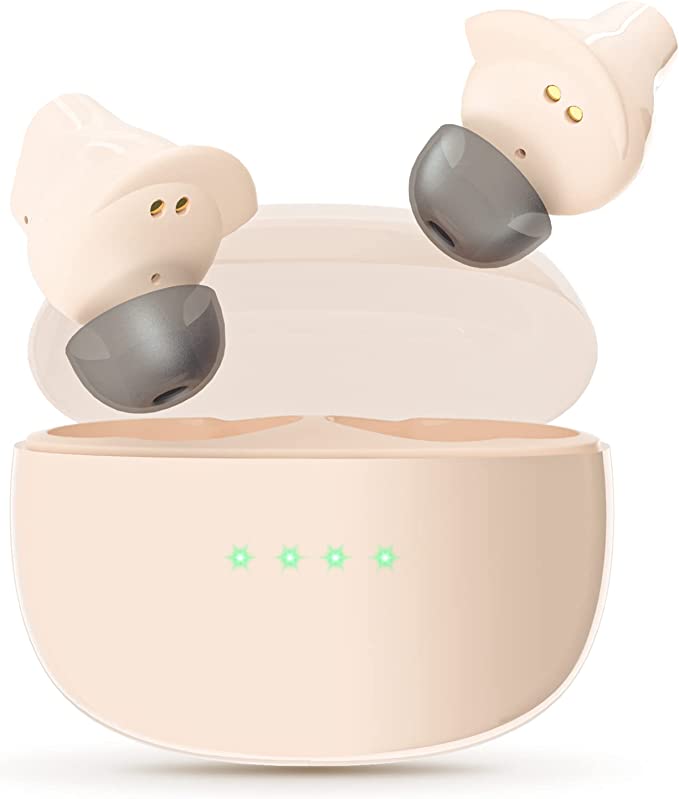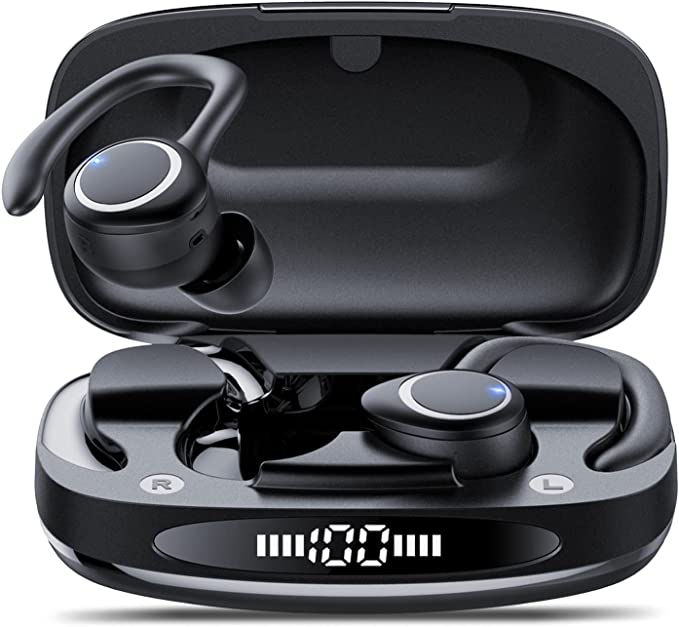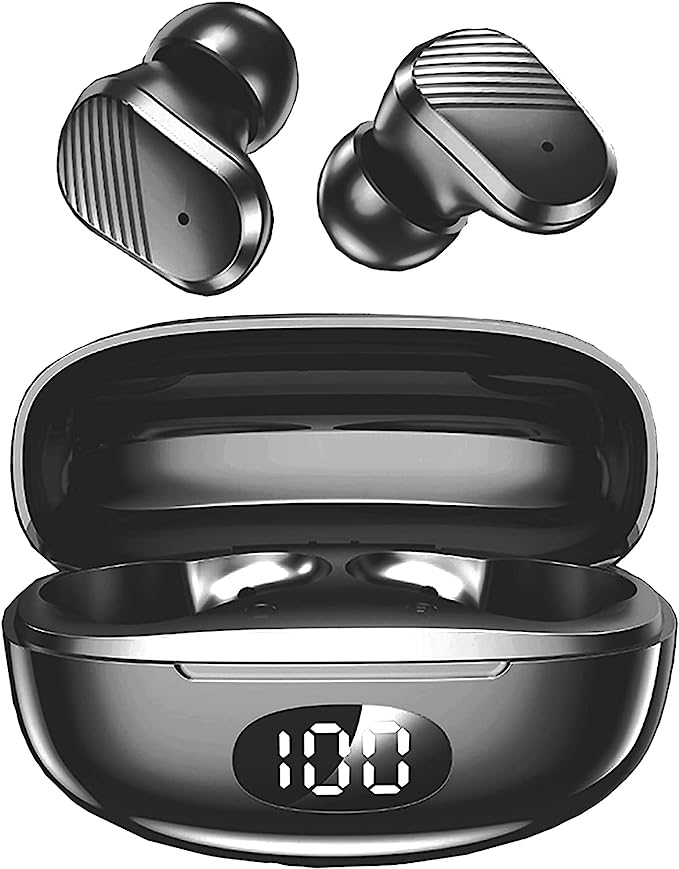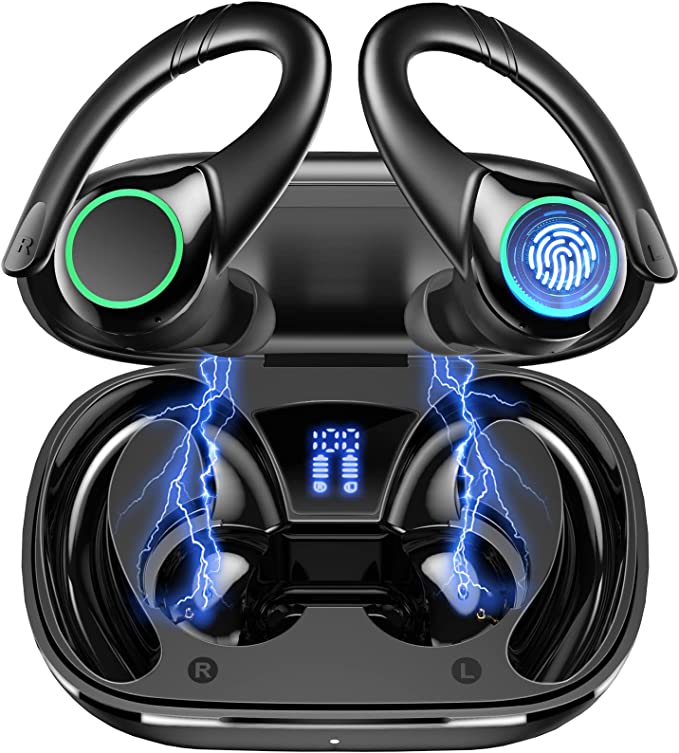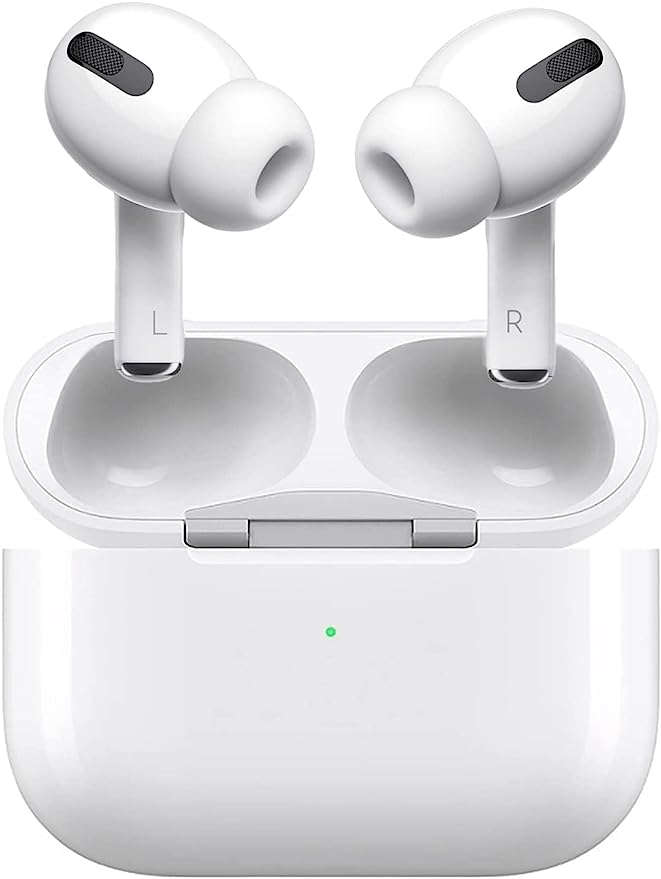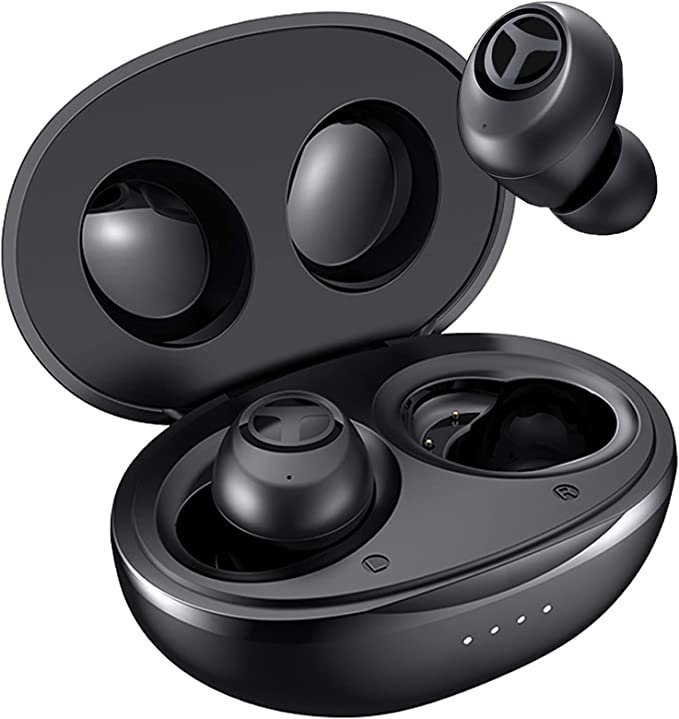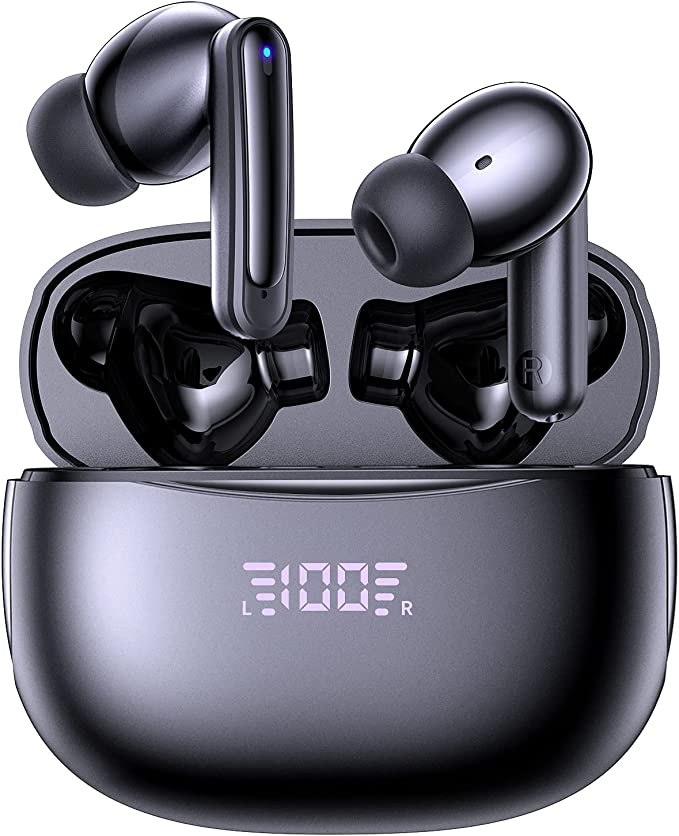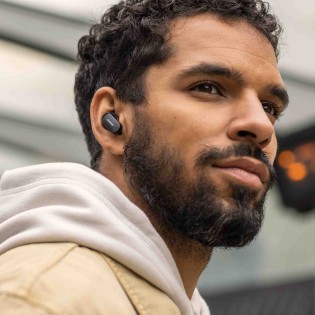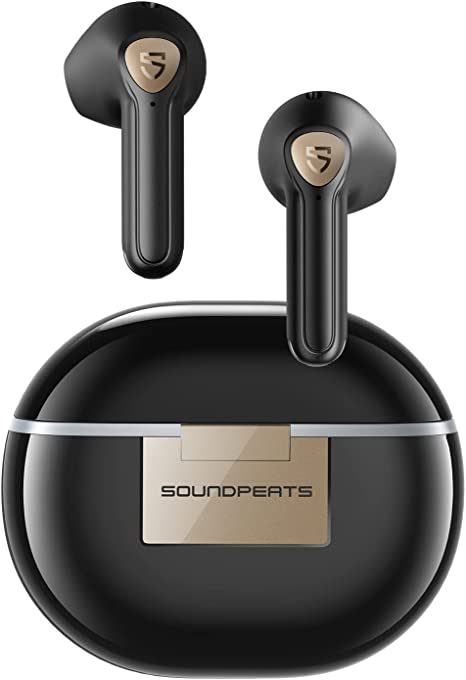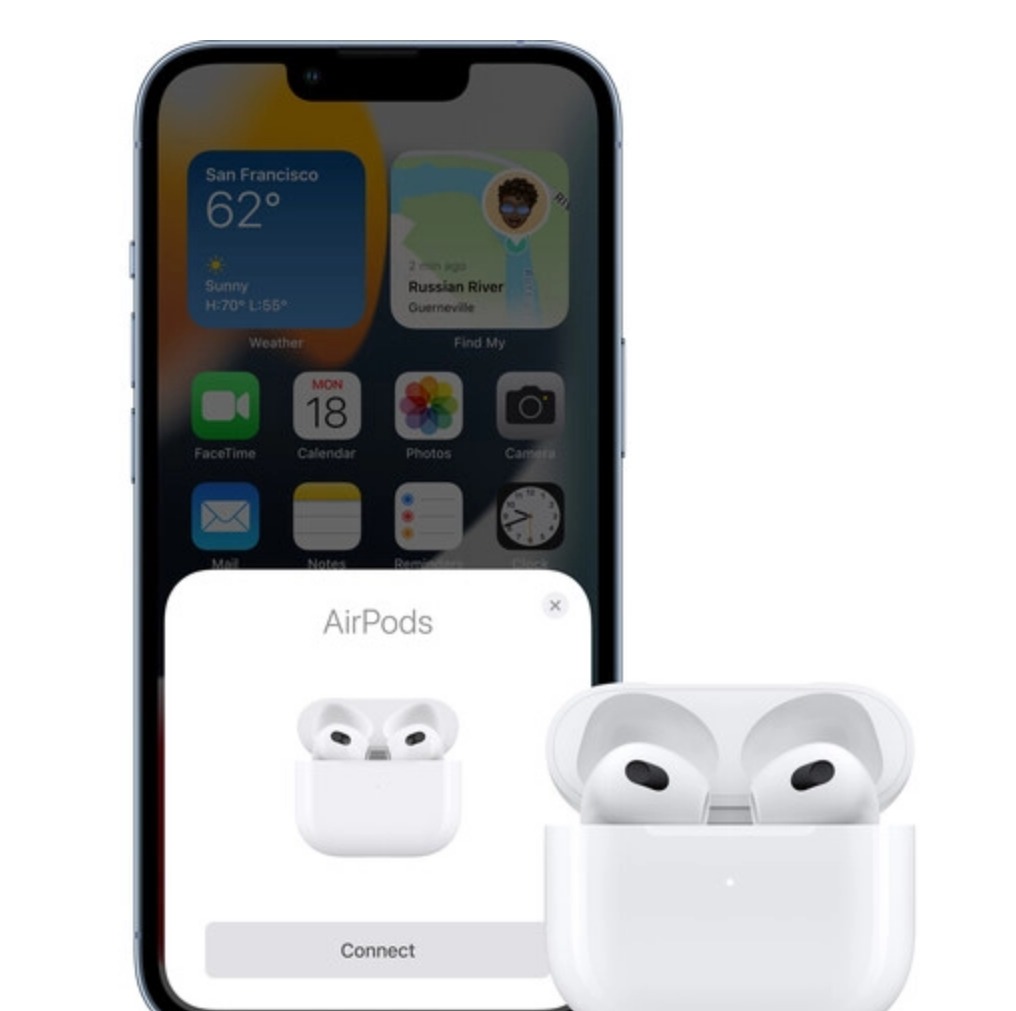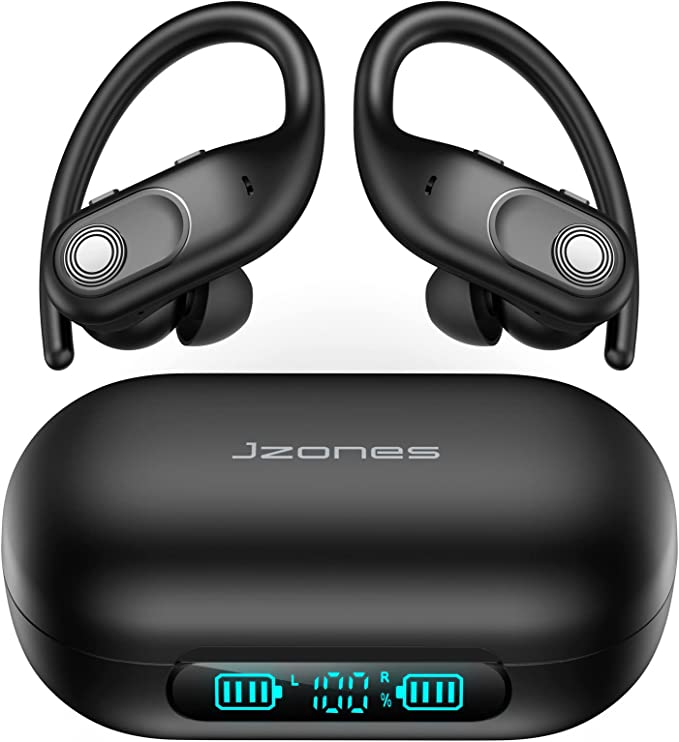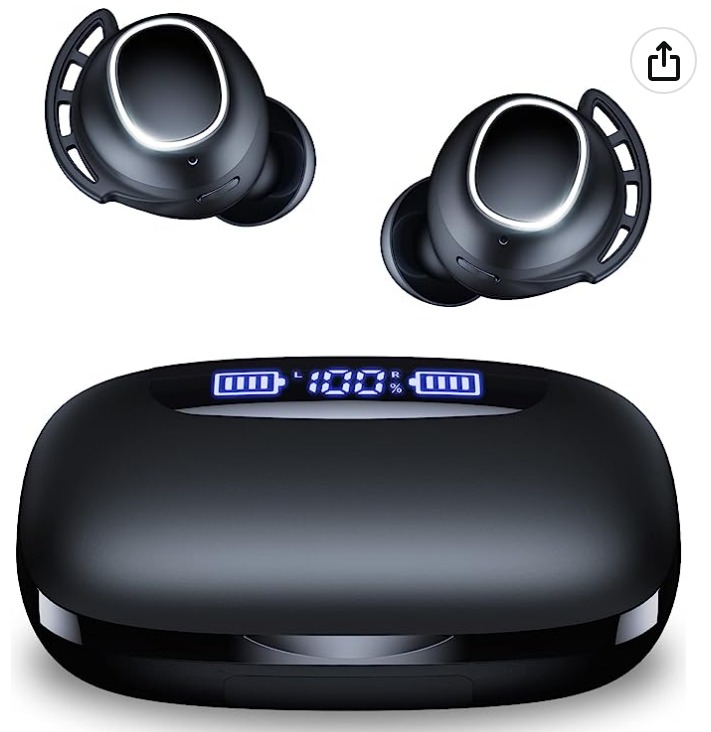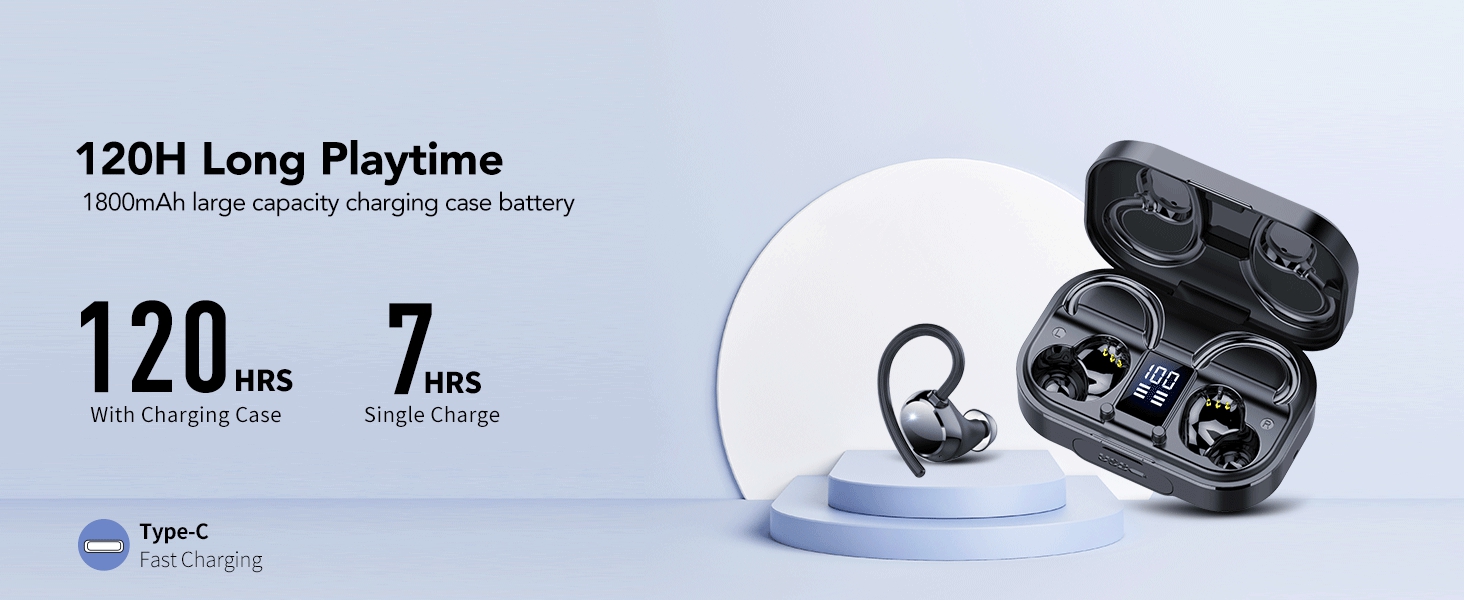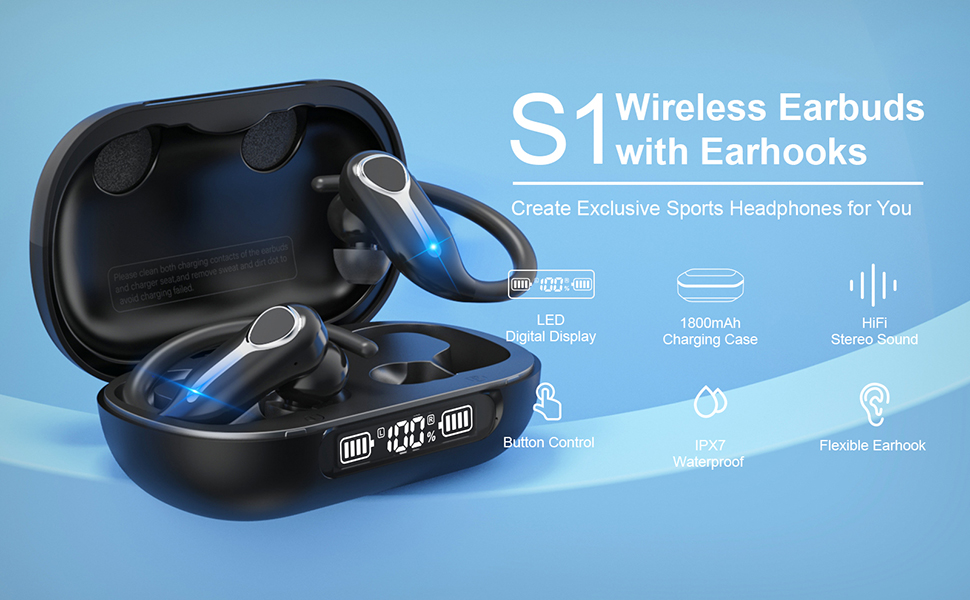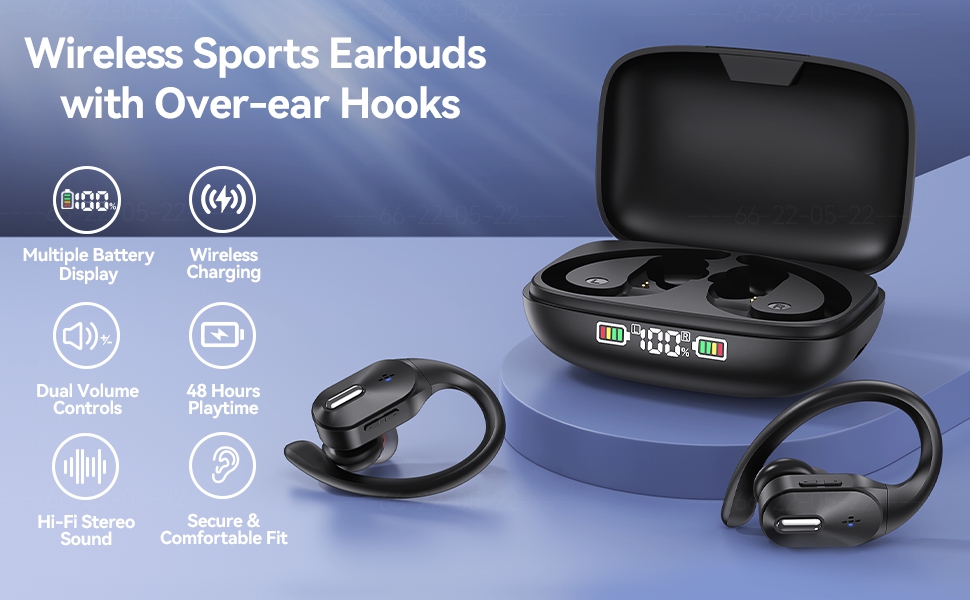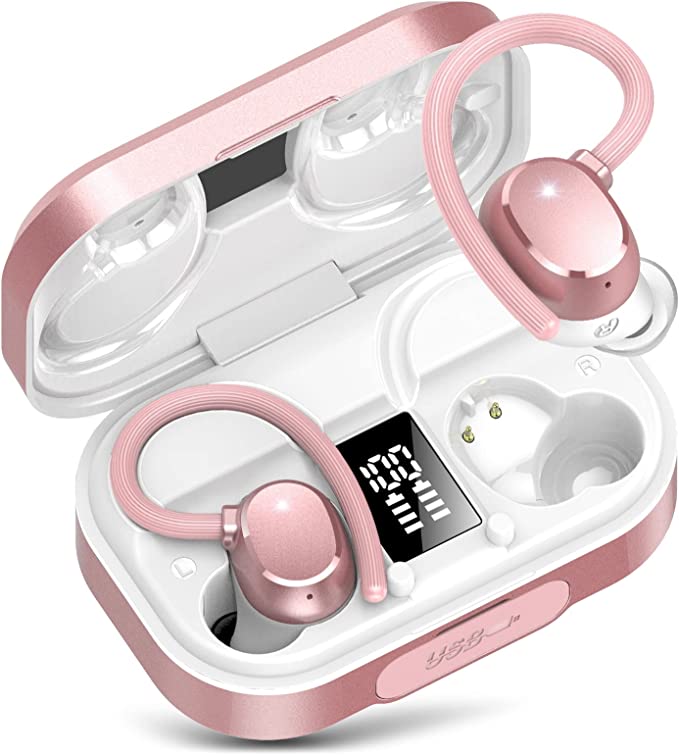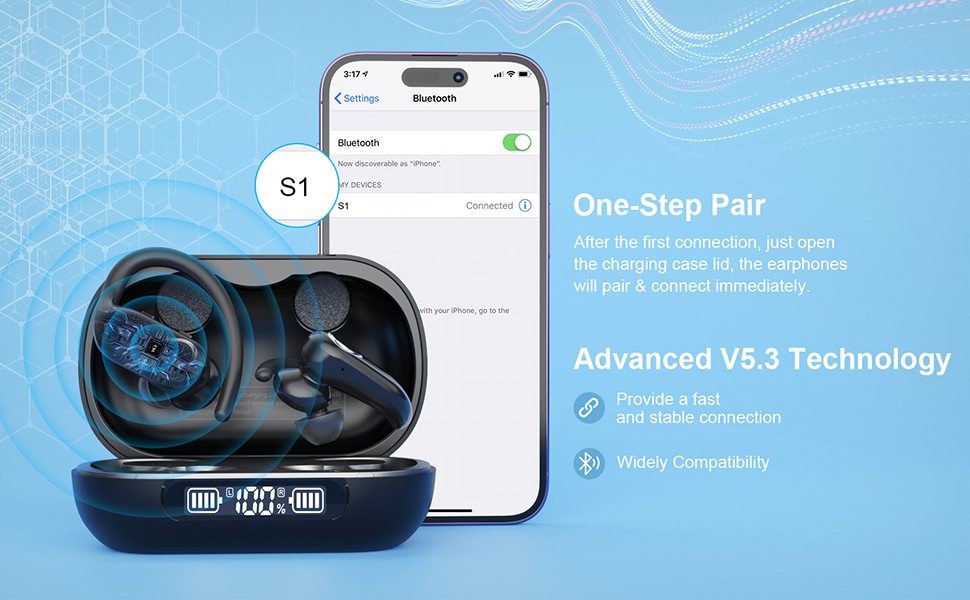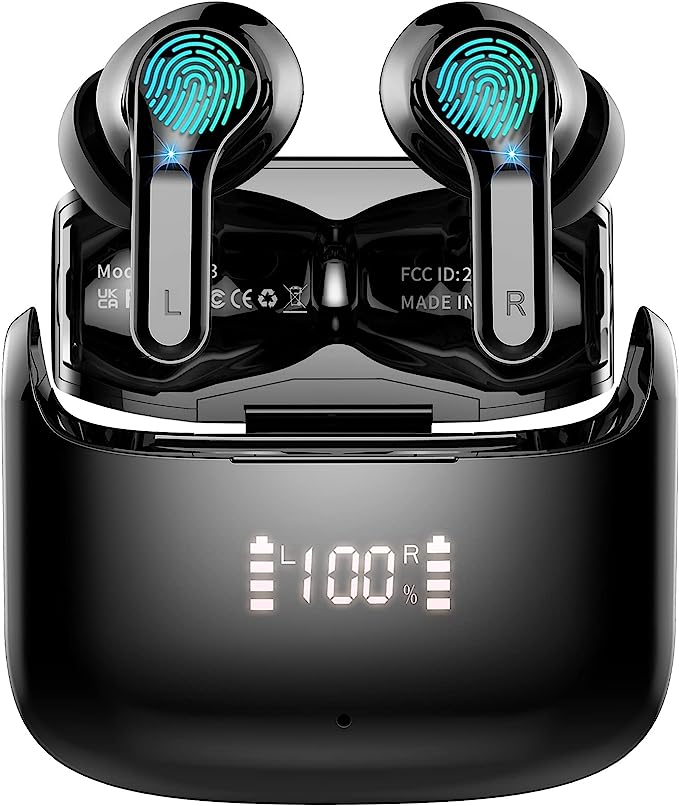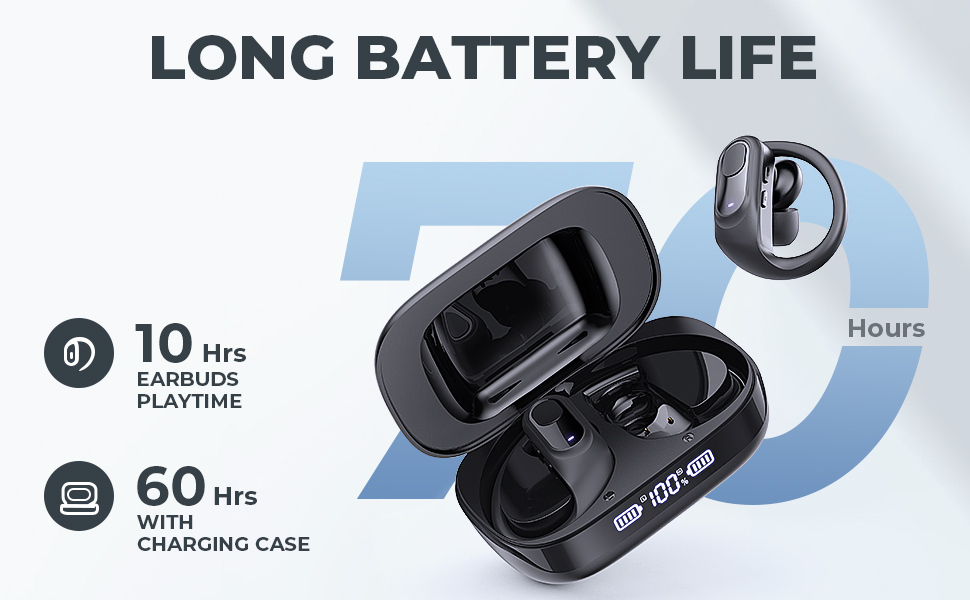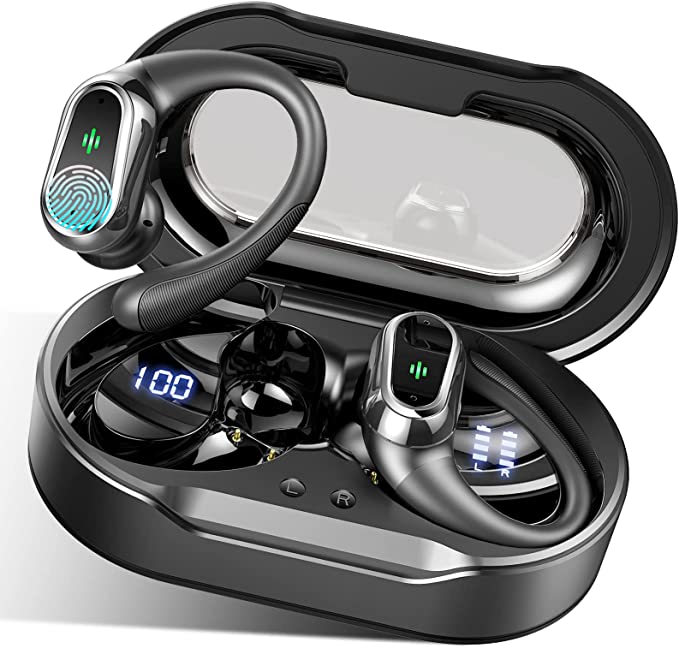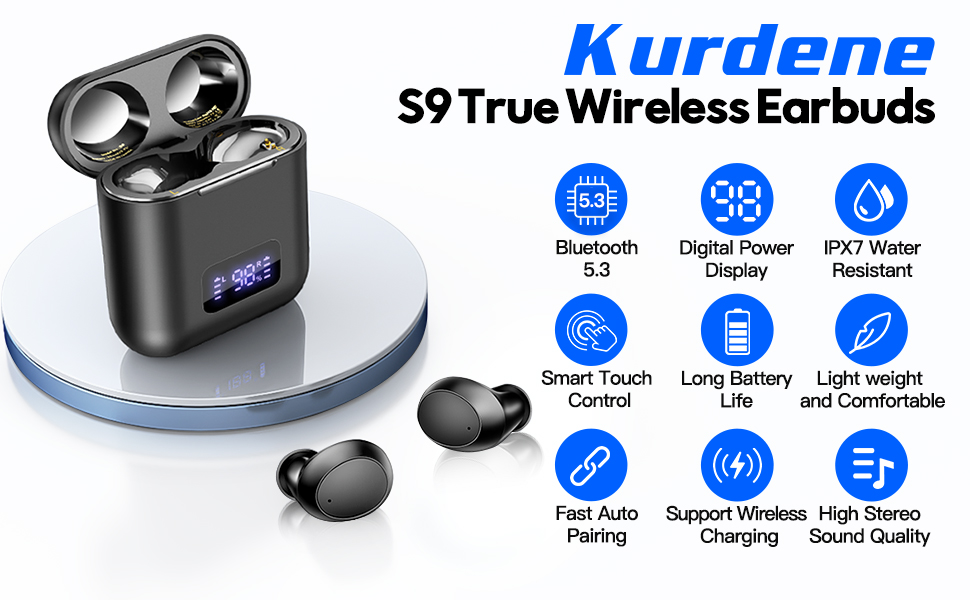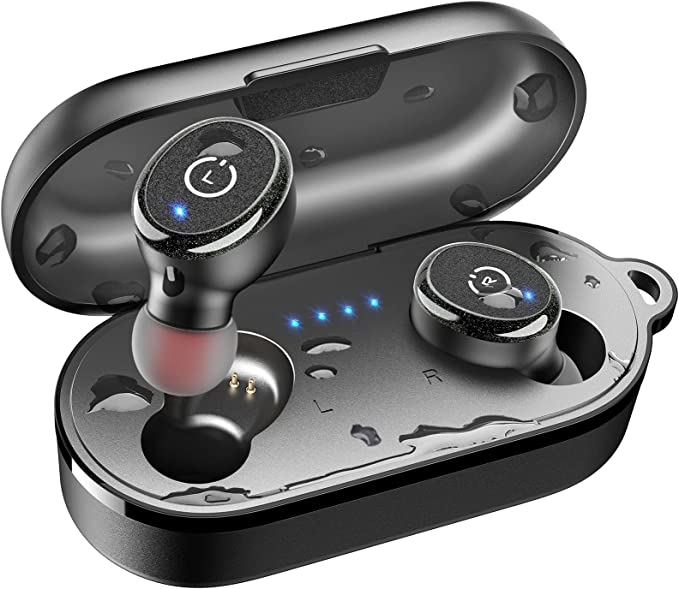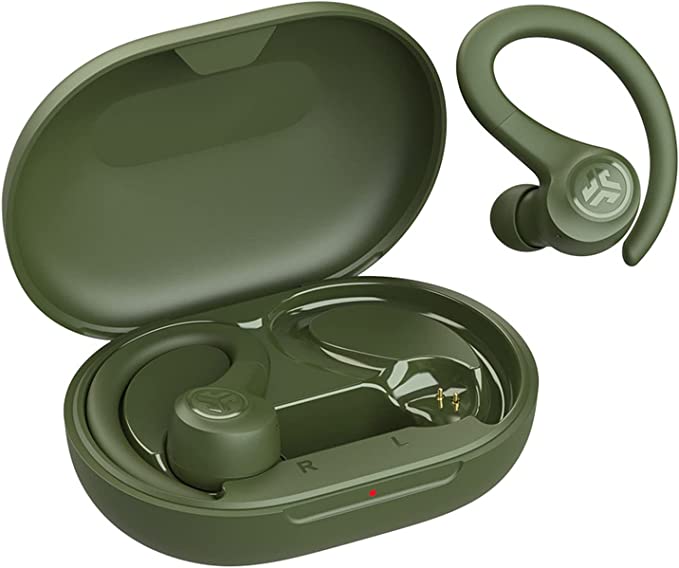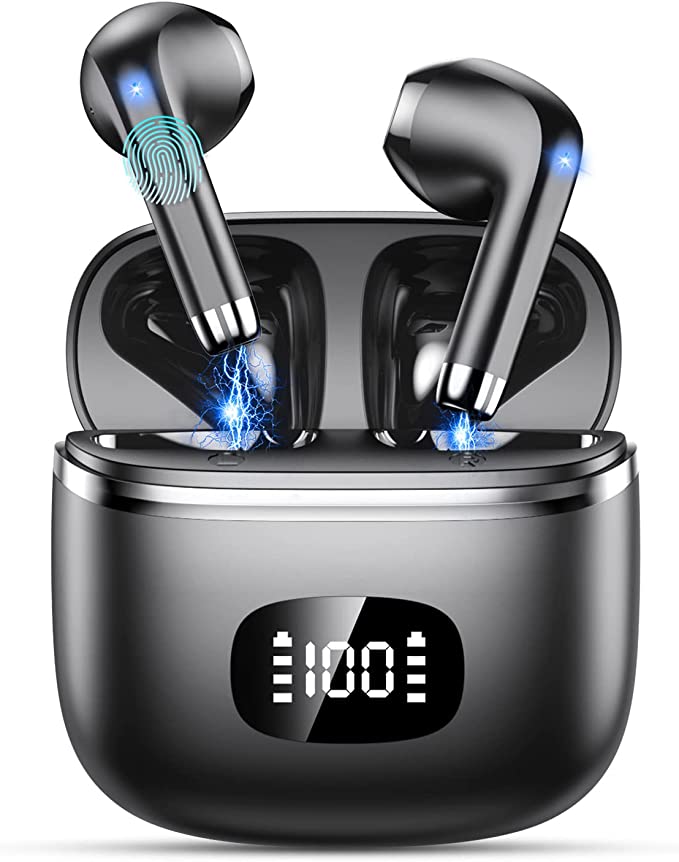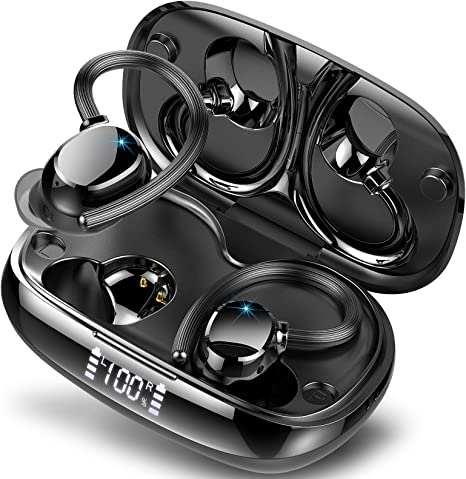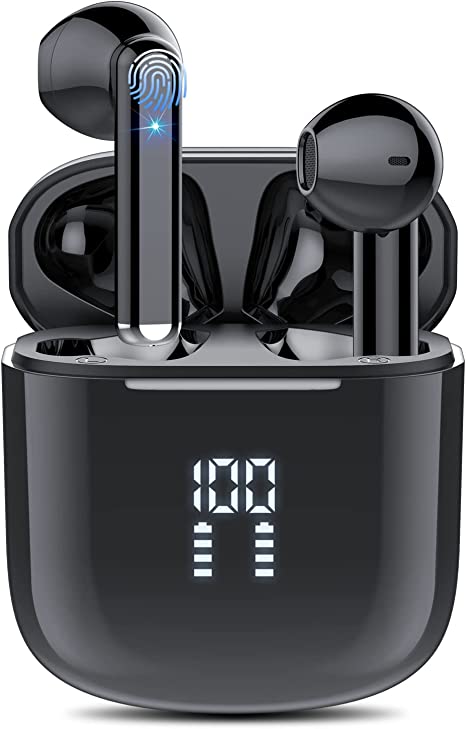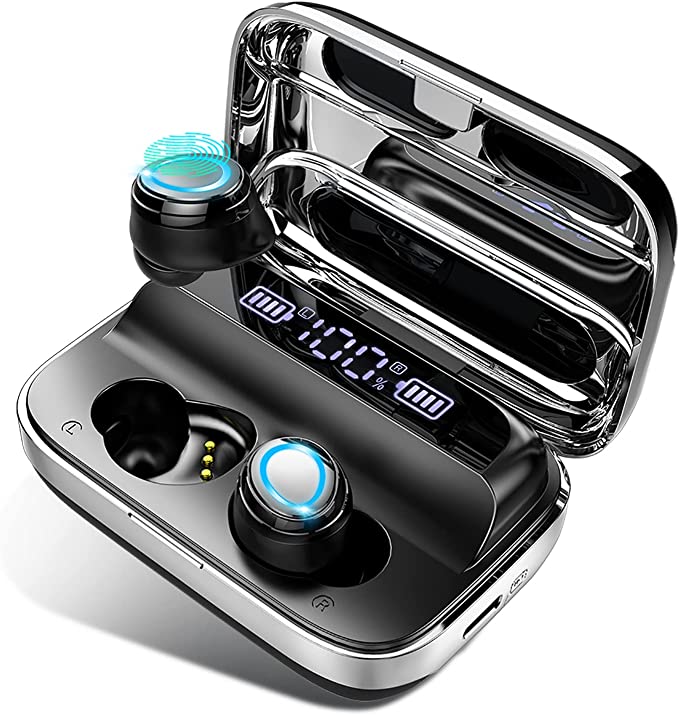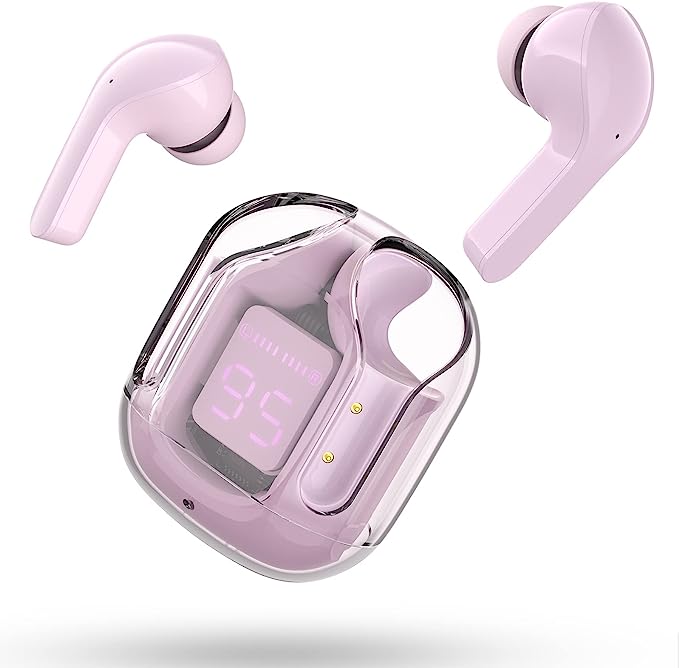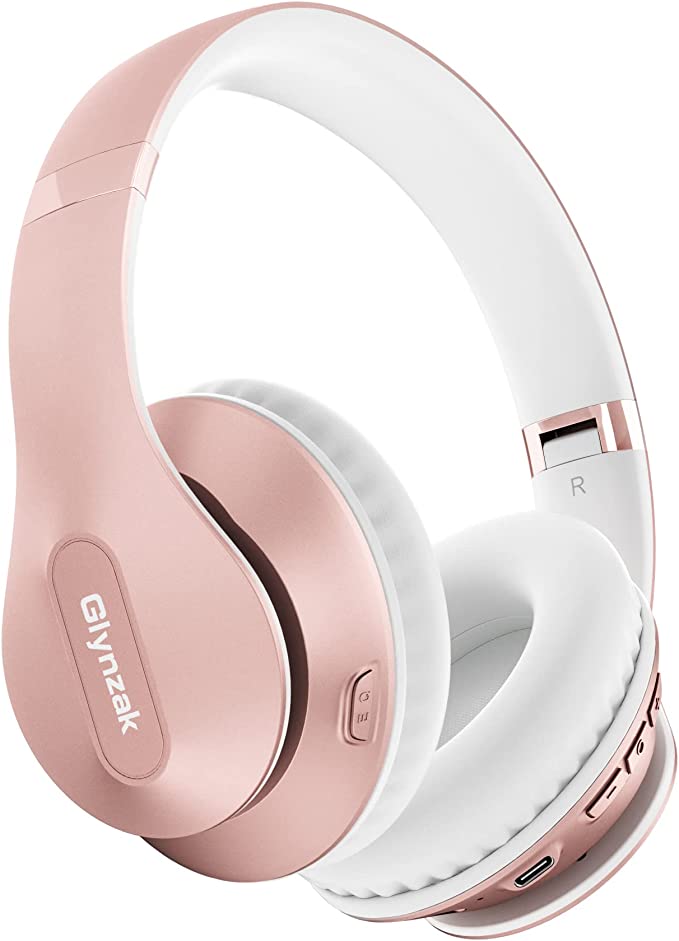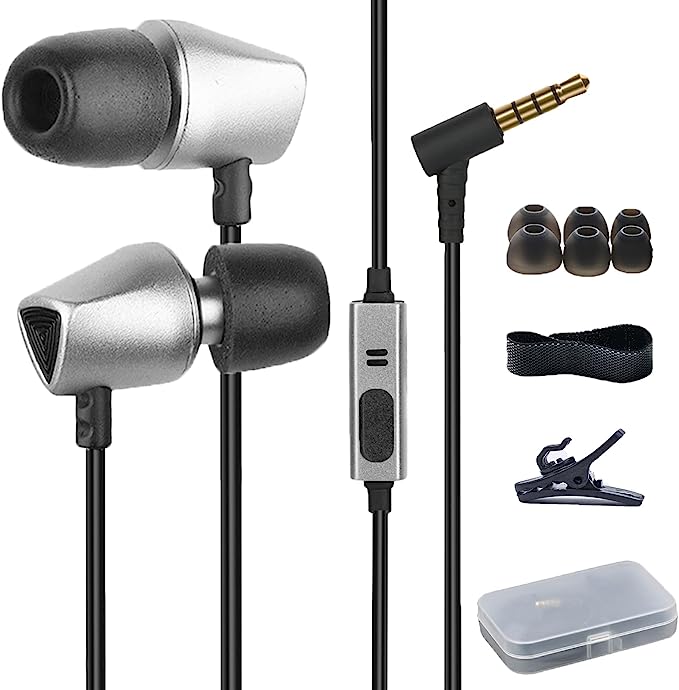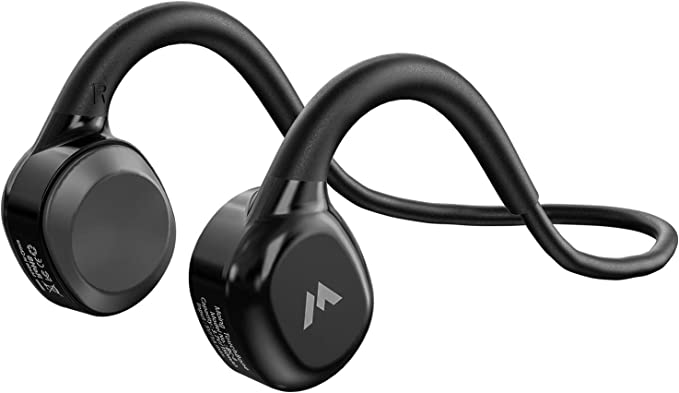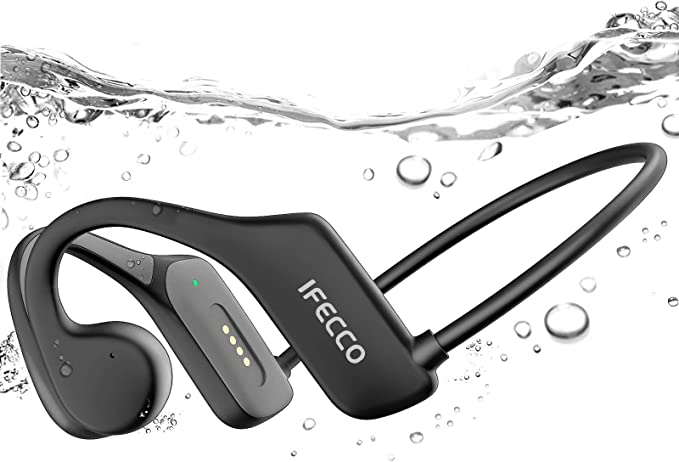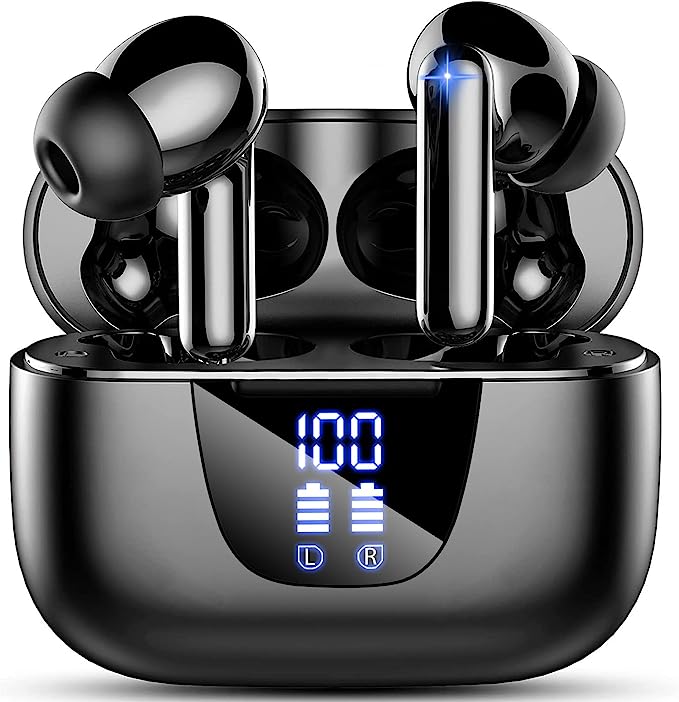uaue Q13 Wireless Earbuds: A Punchy and Enduring Bluetooth Earbud
Update on June 25, 2025, 7:16 a.m.
In the grand orchestra of daily life, our personal soundtrack has become an indispensable companion. And for many of us, the conductors of this intimate symphony are a pair of True Wireless Stereo (TWS) earbuds – those tiny, unassuming marvels that seem to magically pluck music from the air and deliver it straight to our ears. They’ve journeyed from being a futuristic novelty to an everyday essential, untethering us from the tyranny of tangled wires. But have you ever paused, mid-song or mid-podcast, and wondered about the intricate science and engineering concert happening within those diminutive shells?
Today, we’re not here to review a product, but rather to use one – the uaue Q13 Wireless Earbuds – as our lens, our “specimen” if you will, to explore the fascinating technologies that power the modern wireless audio experience. So, grab your metaphorical lab coat, and let’s embark on an enlightening journey into the material science, acoustics, and wireless wizardry that bring your audio to life, aiming to decode features like “Deep Bass” and “Bluetooth 5.2.”

Crafting the Sound: The Graphene Heartbeat and the Language of Audio
At the very heart of any earbud, the component responsible for translating electrical signals into the sound waves that grace your eardrums, is the driver. Think of it as a miniature loudspeaker, or perhaps more aptly, the lead instrumentalist in our pocket-sized orchestra. The uaue Q13 earbuds, according to their specifications, house 13mm Custom Graphene-Coated Dynamic drivers. Now, “dynamic driver” is a common term, referring to a design that uses an electromagnet to vibrate a diaphragm (a thin membrane), which in turn moves the air and creates sound. It’s a tried-and-true technology.
The “graphene-coated” part, however, is where things get particularly interesting from a materials science perspective. Graphene, if you haven’t encountered it, is often hailed as a “wonder material.” Imagine a single layer of carbon atoms, arranged in a perfect hexagonal lattice – like an atomic-scale honeycomb. It’s incredibly thin (one atom thick!), exceptionally strong (about 200 times stronger than steel by weight), and remarkably lightweight. In the world of audio, these properties are golden.
Why? An ideal driver diaphragm needs to be very stiff, so it doesn’t warp or create unwanted vibrations (distortion) when it moves, especially at high speeds or for powerful bass notes. It also needs to be very light, so it can respond almost instantaneously to the nuances of the audio signal, reproducing subtle details and crisp high frequencies. Traditional diaphragm materials like Mylar or paper have their merits, but graphene’s unique combination of extreme stiffness and low mass offers the potential for superior performance. A graphene-coated diaphragm could, theoretically, vibrate more precisely and rapidly. This precision is what might contribute to claims of “ultra-accurate HD sound,” while its ability to move significant air without deforming could underpin the “Deep Bass” music experience the Q13 aims for. It’s like having a drum skin that’s both incredibly taut and feather-light, capable of producing both booming lows and sharp, clear taps with equal finesse. The history of audio is, in many ways, a history of searching for better materials to more faithfully reproduce sound, and graphene represents a fascinating modern chapter in that quest.
But a great driver is only part of the sonic equation. The music on your phone or tablet exists as digital data – a stream of ones and zeros. Your ears, however, perceive sound as analog waves. Bridging this digital-to-analog gap efficiently and faithfully involves something called an audio codec. The uaue Q13 supports AAC (Advanced Audio Codec). Think of a codec as a highly skilled translator, taking the complex language of digital audio and converting it into a form the earbuds’ amplifier and driver can understand and reproduce. AAC is a “lossy” codec, meaning it intelligently discards some audio data that human ears are less likely to perceive, thereby reducing file size and bandwidth requirements without a drastic loss in perceived quality. It’s particularly well-regarded for its performance on Apple devices, often providing a richer listening experience compared to the more basic SBC (Subband Codec) that all Bluetooth audio devices must support. So, when your device and earbuds “speak AAC,” they’re using a more sophisticated dialect for their musical conversation.

The Unseen Connection: Bluetooth 5.2 Weaving Wireless Magic
The very essence of TWS earbuds is their wireless nature, and the technology responsible for this invisible tether is Bluetooth. It’s easy to take for granted now, but Bluetooth has undergone a significant evolution since its inception in the late 1990s, when it promised to free us from the cable clutter connecting our phones to headsets or computers to peripherals. Early Bluetooth audio had its share of quirks – limited range, occasional dropouts, and a noticeable impact on battery life.
Fast forward to today, and the uaue Q13 earbuds leverage Bluetooth 5.2. This isn’t just an incremental update; Bluetooth 5.2, as a standard, brings several enhancements that directly benefit your listening experience. Imagine your audio data traveling on a wireless highway. Bluetooth 5.2 aims to make this highway wider, faster, and more reliable. It generally offers faster transmission speeds, which can help in handling higher-quality audio streams with less congestion. It boasts stronger connection stability, meaning fewer annoying dropouts or stutters, contributing to that “rock-solid connection” users crave. It can also offer an extended range, giving you more freedom to roam away from your source device. Furthermore, Bluetooth 5.2 includes improvements in power efficiency, such as LE Power Control, which allows devices to dynamically optimize transmission power. This helps the tiny batteries in earbuds last longer. So, when you experience “smoother and clearer music playback and conversations,” it’s these under-the-hood advancements in Bluetooth technology that are working diligently on your behalf.
And what about that almost magical moment when you first take your earbuds out of their case, and they just… connect? The “One-Step Pairing” feature, common in modern TWS earbuds, is a carefully choreographed dance of Bluetooth protocols. After an initial manual pairing, the earbuds and your device remember each other. Subsequent openings of the case trigger the earbuds to power on and automatically re-establish that trusted connection, making the path to your audio remarkably seamless.

Engineering Your Personal Soundscape: Noise Cancellation and Call Clarity
Our world is a cacophony of sounds. The rumble of traffic, the drone of an airplane engine, the chatter of a busy office – sometimes, we crave a little pocket of peace to truly immerse ourselves in our music or focus on a call. This is where Active Noise Cancellation (ANC) technology steps in. The product information for the uaue Q13 mentions “Noise Cancelling Wireless Earphones” and lists “Active Noise Cancellation” under its Noise Control features.
But how does ANC actually work? It’s not soundproofing in the traditional sense of physically blocking sound. Instead, it’s a clever application of physics. ANC-equipped earbuds use tiny microphones to “listen” to the ambient noise around you. An internal electronic chip then analyzes these incoming sound waves and, in real-time, generates an opposing sound wave – an “anti-noise” – that is precisely out of phase with the original noise. When these two sound waves (the unwanted noise and the generated anti-noise) meet, they effectively cancel each other out through a principle called destructive interference. Imagine dropping two pebbles into a still pond; where the peak of a wave from one pebble meets the trough of a wave from the other, the water flattens. ANC does something similar with sound waves, primarily targeting consistent, low-frequency sounds like engine hums or air conditioning drones. The result? A significant reduction in perceived background noise, allowing your music or podcast to take center stage. The quest for silence in noisy environments has a surprisingly long history, with early ANC concepts developed for pilot headsets in the mid-20th century to combat cockpit noise!
While ANC is fantastic for immersive listening, clear communication during calls presents a related but distinct challenge. The uaue Q13 specs also mention “built-in high quality microphones with noise cancellation for you to enjoy crystal-clear hands-free calls.” This typically involves algorithms that try to distinguish your voice from surrounding noises, then suppress those background sounds so the person on the other end of the line hears you more clearly. This might involve multiple microphones working together to focus on your speech.

Designed for the Demands of Daily Life: Durability, Endurance, and Intuition
Beyond the core audio and connectivity features, the practicalities of daily use heavily influence an earbud’s appeal. Consider durability. The uaue Q13 boasts an IP7 waterproof rating. “IP” stands for Ingress Protection, and the numbers that follow have specific meanings. The “7” here indicates a high level of water protection: the earbuds are rated to withstand immersion in water up to 1 meter deep for about 30 minutes. Now, this doesn’t mean you should take them for a swim (chlorine or saltwater can still be problematic for materials and charging contacts over time), but it offers excellent peace of mind. Whether you’re sweating it out during an intense gym session, caught in an unexpected downpour while jogging, or accidentally splash them, an IP7 rating means they’re built to survive.
Then there’s the critical matter of endurance. Tiny devices mean tiny batteries, yet we expect them to last. The Q13 claims up to 7 hours of playtime from the earbuds themselves on a single charge, with the included charging case providing an additional 5 charges for a total of about 35 hours of playtime. This longevity is a testament to advancements in lithium-polymer battery technology, which offers good energy density in compact forms, coupled with the power-efficient design of modern chipsets and Bluetooth protocols. The “mini LED charging case” also provides an “individual LED display,” a handy visual cue to check the remaining power levels of both the case and the earbuds, preventing that unwelcome surprise of dead batteries. And when it’s time to refuel, the USB-C charging port is a welcome modern standard, offering a reversible connector (no more fumbling to plug it in the right way) and generally supporting faster charging capabilities. The product lists a charging time of 1.5 hours.
Interacting with these tiny powerhouses is also designed to be intuitive. The uaue Q13 employs Touch Control, utilizing capacitive sensing technology. Your skin is naturally conductive. When you tap the earbud’s surface, it subtly changes the electrical capacitance at that point, which the earbud’s sensors detect as a command. This allows you to control music playback (play/pause, next/previous track), adjust volume, manage calls (answer/reject), and even activate your phone’s voice assistant without needing to fish your phone out of your pocket or bag. It’s a small touch of electrical magic that makes daily use feel effortless.

The Science You Carry
As we draw this exploration to a close, it’s clear that a seemingly simple pair of wireless earbuds like the uaue Q13 is a veritable concert of scientific principles. From the material science of graphene drivers aiming for richer sound, to the complex radio frequency engineering of Bluetooth 5.2 ensuring a stable connection, the clever physics of Active Noise Cancellation creating your personal sound bubble, and the electrochemical innovations in battery technology keeping the music playing – it’s a remarkable feat of miniaturization and ingenuity.
The uaue Q13 Wireless Earbuds, with features like “Hi-Fi Stereo Deep Bass,” “35 hrs Battery Life,” and “IP7 Waterproofing,” serve as a tangible example of how these sophisticated technologies converge. So, the next time you pop in your earbuds, whether they’re these specific ones or any other, take a moment. Listen not just to the music, but to the faint echo of the incredible, often invisible, science that’s working hard to enrich your auditory world. It’s more than just a gadget; it’s a pocket-sized symphony, a testament to how far we’ve come in our quest to carry our sound, and a little bit of scientific wonder, wherever we go.
